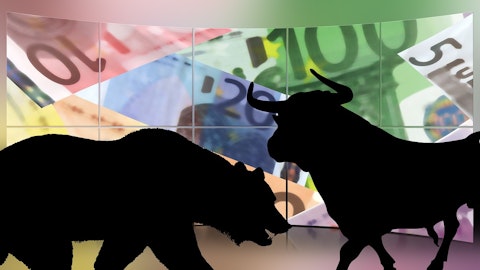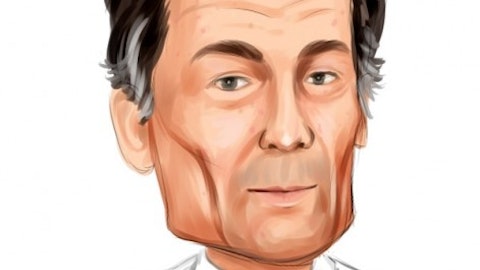4. Vale S.A. (NYSE:VALE)
Number of Hedge Fund Holders: 27
Vale S.A. (NYSE:VALE) produces and sells iron ore and iron ore pellets for use as raw materials in steelmaking in Brazil and internationally. The company operates through its Ferrous Minerals and Base Metals segments. Vale S.A. (NYSE:VALE) is exposed to China’s construction sector and is a major supplier of iron ore to the country. If China undergoes a housing crash, Vale S.A. (NYSE:VALE) is likely to suffer major pullbacks. As of August 11, Vale S.A. (NYSE:VALE) has lost 32.38% over the past year.
On July 13, Exane BNP Paribas analyst Sylvain Brunet downgraded Vale S.A. (NYSE:VALE) to ‘Neutral’ from ‘Outperform’ and reiterated his $16 price target on the stock. Vale reported fiscal Q2 EPS of $0.94 on July 28, beating estimates by $0.14. The company’s revenue for the quarter dropped 33.09% year-over-year to come in at $11.2 billion, missing estimates by over $428 million. The company also slashed its full-year iron ore production guidance, reporting that it now expects iron ore output to range between 310 million and 320 million metric tons, down from its prior guidance of between 320 million and 335 million metric tons.
At the end of the first quarter of 2022, 27 hedge funds were bullish on Vale S.A. (NYSE:VALE), holding collective stakes in the company worth $2.37 billion. Those figures are improvements over the 25 funds with stakes worth $1.71 billion a quarter earlier. As of June 30, Fisher Asset Management owns nearly 22.2 million shares of Vale S.A. (NYSE:VALE) and is the top shareholder in the company with a $325 million position.
Grantham Mayo Van Otterloo & Co. LLC, an asset management firm, mentioned Vale S.A. (NYSE:VALE) in its first-quarter 2022 investor letter, here is what the firm had to say:
“Let’s look at Vale (NYSE:VALE), the world’s largest iron ore producer, as a case study for how shareholders can be rewarded. Vale’s stock price is about where it was at the beginning of last year. Despite the market’s lack of enthusiasm, the company generated about $20 billion of free cash flow last year. Not bad for a company with a market cap of a little over $100 billion and no substantive debt as of the end of March. 4 What did the company do with all that cash? Last year, Vale paid out about $9 billion in regularly scheduled dividends and distributed another $10 billion between extra dividends and share repurchases. Combined with dividends distributed in the first quarter of this year and a recently announced share repurchase, Vale has returned or announced the return of over $33 billion since the beginning of last year, almost a 32% yield relative to the market cap of the company. Not a bad way to win.”





